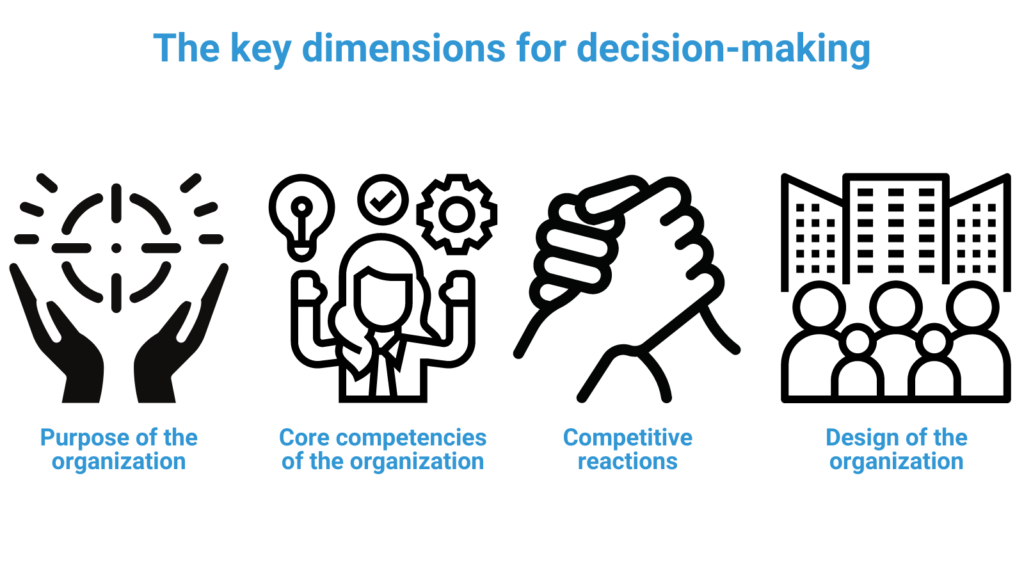
Organizational Design
What is Organizational Design?
Organization design is about achieving organizational purpose, organizational objective through human capabilities. How we look at organizational design, it involves three critical pillars;
1) diversity of skills and competencies,
2) Inter-dependency among people, and
3) Purpose of the organization or unit of effort.
So, organizational design refers to all the structures and processes that enables us to leverage capabilities, hence bringing together the strategy or an organization and its human resources management, which enables the implementation of the strategy, achieving strategic objectives provided there exists the right and optimal organizational design.

The key parameters of Organizational Design
What is important to understand are the pivotal parameters that need to be kept in mind when we think about an organization – when we are thinking about how to go about designing an organization. First and foremost, every organization starts with some purpose in mind, and we have to understand that when we are thinking about growth, scaling, changing the organization, are we actually retaining the purpose, will the purpose get diluted, are we consciously changing the purpose or not. But the purpose is the driving force behind the founder, behind the leaders, and very often, the motivational factor behind all its employees, and that must be kept in mind.
As an organization, why is it that we have been successful so far?
Secondly, we must understand that why is it that it is us, the organization, which should be doing that activity. What is the competence that we actually have? What are we good at and what are we not very good at? So, when thinking about change in an organization, we must ask the question that why is it that we have been successful so far, and among options that one might consider, which is the one which will allow us to develop on our strengths or are there certain things that we do not have today as an advantage, but we need to grow them, we need to inculcate them, and do we have enough resources, do we have enough motivation to actually develop those competencies.
Finally, there has to be some amount of competitive advantage that an organization needs to have to sustain its business, and one has to be very careful about identifying it and sticking on to it!
Is your organization in need of redesign? Evaluation of core competencies? Talk to us to learn more how our Business Design Development & Innovations practice area can assist your organization.
Talk to usThe competitive angle and how size matters
When an organization operates in a marketplace, there are surely going to be competitors because if the organization has a nice, successful model which enables it to address the needs of the customers (or to turn previously non-customers to customers) and also make profits, there will be others who will be thinking, “Hey, why can’t we do that as well? How can we do it better?”
If an organization does some action in the marketplace, such as by changing products, by addressing a different customer segment, or entering a completely new market, an organization has to keep in mind how will its competitors react to it. If an organization is small, many of the big competitors might not even bother about it because the small organization is not troubling them at all, it is too small for them, but the moment when scaling starts, competitors will sit up and they will take notice, and if they think that a threat is imminent to their existence, then they will do certain things so that they drive the ”new comer” out of the market. Depending on what kind of an organization, the competitive reactions can be much stronger, much sharper, and the “new comer” will have to take care of that.
Implications on growth
What is very important is to understand that if an organization chooses an option of growth, how does it need to structure its organization, because the current organization and its design is not necessarily going to be useful the moment an organization starts growing big, the moment it starts spreading to new markets, regions, and industry verticals.
Contact our Business Design Development & Innovations practice area to learn more how we can assist your organization on your growth journey
Talk to us
Organizational Design as an enabler of strategy
Firstly, we must understand that organization design is a critical enabler of organizations strategy. How are people arranged, how are their capabilities distributed so that a firm can achieve its strategic objective(s)? Now, a very interesting corollary of this principle is that while in an ideal world, the design should be an enabler of organization strategy, for large organizations, actually design can constrain the organization strategy. How does it happen?
Organizational design can constrain the strategy of an organization. Agile strategy-making can avoid this. Read more here!
Typically, small organizations are very good in coming up with new ideas, innovations. Hence, entrepreneurship is very much a domain of small organizations, but large organizations struggle to come up with new things – breakthrough innovations. Large organizations very often, are not very innovative in nature. This represents a classic example of how a current structure can become a constraint for strategy, and to some extent, it is commonsensical because when an organization has hundred thousand people, then it needs to have systems and processes to move even simple papers – decision making can take a very long time!
The dilemma of big organizations
An employee might have a brilliant idea, but for the CEO of the organization to actually approve that idea, give the employee enough money to do the experiments might take a very long time because out of hundred thousand people, there may be twenty thousand people coming up with new ideas every day, whereas if the organization is small, then maybe five of the employees are sitting in a small room and then one person has a brilliant idea, all four others agree that, “Wow! This is wonderful, let us go and implement it.”
The structure can’t be too constraining regardless of the size of an organization.
So, as very large organizations already have a structure in place, because they already have a system and process and culture in place, they cannot just do whatever they want. They have to worry about employees, they will have to worry about customers, and they have to worry about shareholders and other key stakeholders. Hence, there is a relationship between the structure and strategy that leaders will always need to keep in their mind. Organizational design structure enables strategy, but sometimes, it can hold it back, and hence, it is important to ensure that even in the large organization, there is a structure or a design that should not be too constraining.
Trade-offs need to be accounted for when thinking about organizational design.
Organizational Design(s) involves trade-offs
When thinking about organizational design, it is crucial to understand the various trade-offs that organizational design involves. When we have first mentioned this to our clients as part of our assignments, it is almost taken like a bad news. Why? Because you can’t have everything in a design. If the organization is large, it has its advantages, but equally, it cannot be very innovative, it cannot be very nimble or agile. With a small organization, it can be very nimble, very innovative, but it has to be remembered, it can be very easily gobbled up by a competitor. So, these different kind of trade-offs need to be accounted for.
